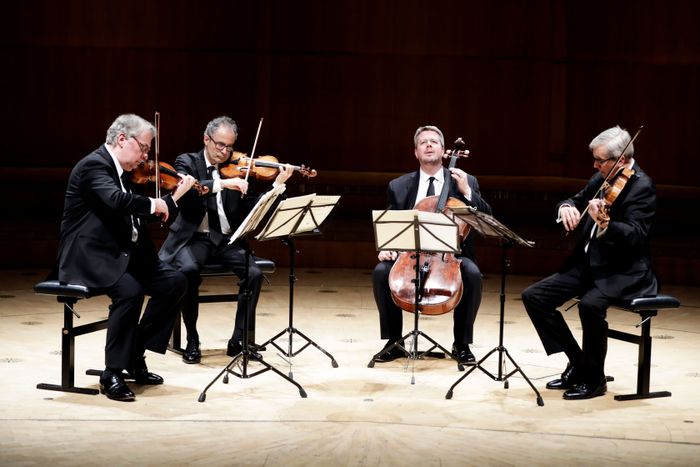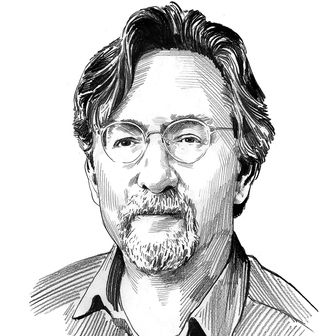
The Emerson String Quartet, a mild-mannered foursome that for 45 years has dominated its genre with playing that ranges from tripping elegance to brutal stomp, is closing up shop. Not immediately, of course — in the classical-music world, bookings stretch out way ahead and all good-byes are long — but two years from now, the group will disband. That gives it time for at least one more New York premiere, an all-Beethoven road show, and a European tour plus an entire valedictory season. Even such a slow-motion shutdown is momentous because the Emersons will leave an immense storehouse of recordings, protégés, and memories plus a legacy of lofty standards.
The string quartet holds a princely position among classical-music genres because it has endured since the 18th century and yet proved wildly adaptable to stylistic evolution. It has a dual reputation as a confessional vehicle, distilling composers’ most intimate and profound thoughts, and as an expressive laboratory, where musical adventurers could experiment freely. In recent decades, though, the form — like classical music in general — has struggled to hold its turf in an ever more varied musical landscape. Still, many younger quartets have maintained, and even raised, the traditions of excellence and inquisitiveness. “That’s one thing that gives us hope for the future,” says cellist Paul Watkins. “There’s a level of instrumental skill among many young quartet players that is sort of at its height.”
When the Emerson Quartet formed as a student ensemble in 1976, a triumvirate of American groups — the Juilliard, Guarneri, and Cleveland Quartets — monopolized the national scene. (Only the Juilliard Quartet still exists, though its membership has turned over many times.) In some ways, the Emerson is the last of the old-style brand-name ensembles, blessed with stability, a loyal audience, and a long-term recording contract. (The group has been exceptionally stable: The two violinists, Eugene Drucker and Philip Setzer, co-founded the group in 1976, violist Lawrence Dutton joined the following year, and cellist David Finckel arrived in 1979. That was it, until Watkins replaced Finckel in 2013.)
As a business, the touring string quartet has become an increasingly difficult proposition to maintain. In a typical season, the group’s members spend nearly half the year on the road, not just performing and rehearsing but also dealing with a constant whirl of visas, plane tickets for five (the extra seat is for the cello), taxes paid in a dozen different countries, contracts, scheduling, program notes, interviews, bookkeeping, and so on. Revenue from recordings long ago dropped to nominal levels. Even at the top of its game — and it has rarely dipped below that level — the group bounced from the world’s most prestigious stages to local libraries and back again.
Over the decades, the Emersonians have taken an encyclopedic approach to the standard repertoire, performing the complete quartets of Beethoven, Bartók, and Shostakovich, sometimes in marathon concert series. They occasionally ranged outside their comfort zone, venturing into contemporary music and theatrical productions. During the 2021–22 season, they will give the New York premiere of Penelope, the late André Previn’s final composition, a collaboration with Tom Stoppard scored for soprano, narrator, piano, and string quartet.
But the Emerson’s chief accomplishment was to show how convincingly and consistently four separate temperaments and techniques could fuse into a single organism. “I was in my 20s when the Emerson’s Bartók recording came out” in 1988, says Watkins, who is considerably younger than his colleagues. “I remember putting those LPs on the turntable and being blown away by the level of virtuosity and energy and skill and power.” And, Watkins insists, that dynamism hasn’t waned. “Even now, whenever we step out onstage and play a Beethoven quartet, we try to make it as fresh and new as possible. The challenge of maintaining a high technical standard as one’s body ages makes these pieces all the more interesting. There’s still plenty of energy left.”


